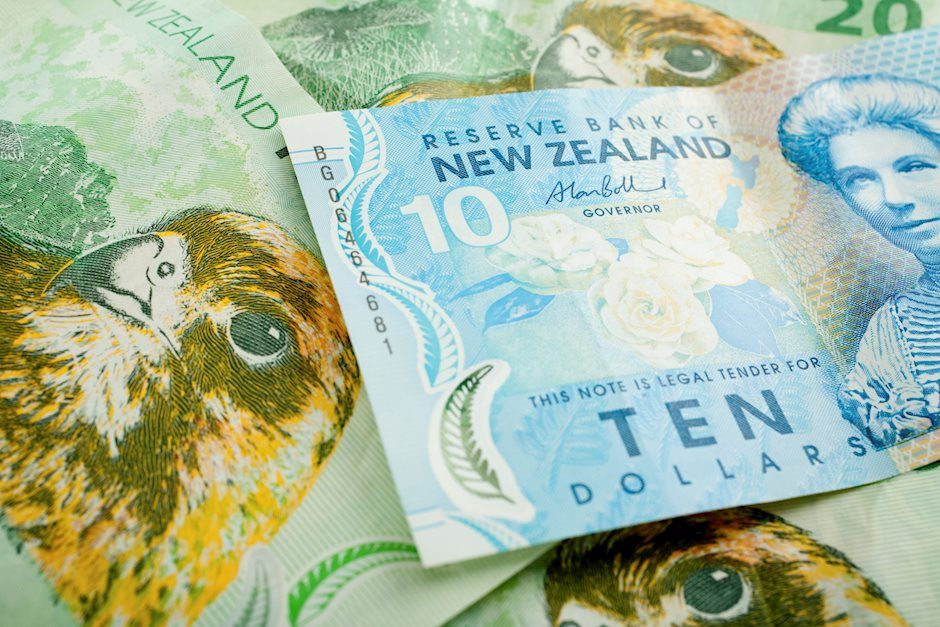NZD/USD attracts some buyers above 0.6050 as China cuts Loan Prime Rates by 25 bps
- NZD/USD gains ground to around 0.6075 in Monday’s Asian session.
- The Chinese central bank reduced the 1-year Loan Prime Rate to 3.10% from 3.35%, bigger than expected.
- Expectations for a less aggressive Fed easing might support the USD.

The NZD/USD pair trades in positive territory near 0.6075 during the early Asian session on Monday. The pair edges higher amid the softer US Dollar (USD) broadly and the announcement of China rate cuts. Later on Monday, the Federal Reserve (Fed) Neel Kashkari and Jeffrey Schmid are scheduled to speak.
On Monday, the People's Bank of China (PBoC) decided to cut the one-year Loan Prime Rate (LPR) by 25 basis points (bps) from 3.35% to 3.10% and cut the five-year LPR from 3.85% to 3.60%. China’s latest move to revive growth and fight off deflation is likely to support New Zealand (NZD) as China is a major trading partner for New Zealand.
However, the rising expectation of more aggressive easing from the Reserve Bank of New Zealand (RBNZ) amid a fall in inflation to the central bank's target range of 1% to 3% in the third quarter could cap the upside for the NZD.
On the other hand, bets for a less aggressive Fed policy easing might lift the Greenback against the Kiwi. The chance of an additional quarter-point rate cut in November stands at more than 90%. Financial markets have priced in two 25 basis points (bps) interest rate cuts before the end of 2024 and further rate cuts next year, likely bringing the policy rate to a 3.25%-3.5% range by September 2025, per Reuters.
New Zealand Dollar FAQs
The New Zealand Dollar (NZD), also known as the Kiwi, is a well-known traded currency among investors. Its value is broadly determined by the health of the New Zealand economy and the country’s central bank policy. Still, there are some unique particularities that also can make NZD move. The performance of the Chinese economy tends to move the Kiwi because China is New Zealand’s biggest trading partner. Bad news for the Chinese economy likely means less New Zealand exports to the country, hitting the economy and thus its currency. Another factor moving NZD is dairy prices as the dairy industry is New Zealand’s main export. High dairy prices boost export income, contributing positively to the economy and thus to the NZD.
The Reserve Bank of New Zealand (RBNZ) aims to achieve and maintain an inflation rate between 1% and 3% over the medium term, with a focus to keep it near the 2% mid-point. To this end, the bank sets an appropriate level of interest rates. When inflation is too high, the RBNZ will increase interest rates to cool the economy, but the move will also make bond yields higher, increasing investors’ appeal to invest in the country and thus boosting NZD. On the contrary, lower interest rates tend to weaken NZD. The so-called rate differential, or how rates in New Zealand are or are expected to be compared to the ones set by the US Federal Reserve, can also play a key role in moving the NZD/USD pair.
Macroeconomic data releases in New Zealand are key to assess the state of the economy and can impact the New Zealand Dollar’s (NZD) valuation. A strong economy, based on high economic growth, low unemployment and high confidence is good for NZD. High economic growth attracts foreign investment and may encourage the Reserve Bank of New Zealand to increase interest rates, if this economic strength comes together with elevated inflation. Conversely, if economic data is weak, NZD is likely to depreciate.
The New Zealand Dollar (NZD) tends to strengthen during risk-on periods, or when investors perceive that broader market risks are low and are optimistic about growth. This tends to lead to a more favorable outlook for commodities and so-called ‘commodity currencies’ such as the Kiwi. Conversely, NZD tends to weaken at times of market turbulence or economic uncertainty as investors tend to sell higher-risk assets and flee to the more-stable safe havens.
Author

Lallalit Srijandorn
FXStreet
Lallalit Srijandorn is a Parisian at heart. She has lived in France since 2019 and now becomes a digital entrepreneur based in Paris and Bangkok.

















